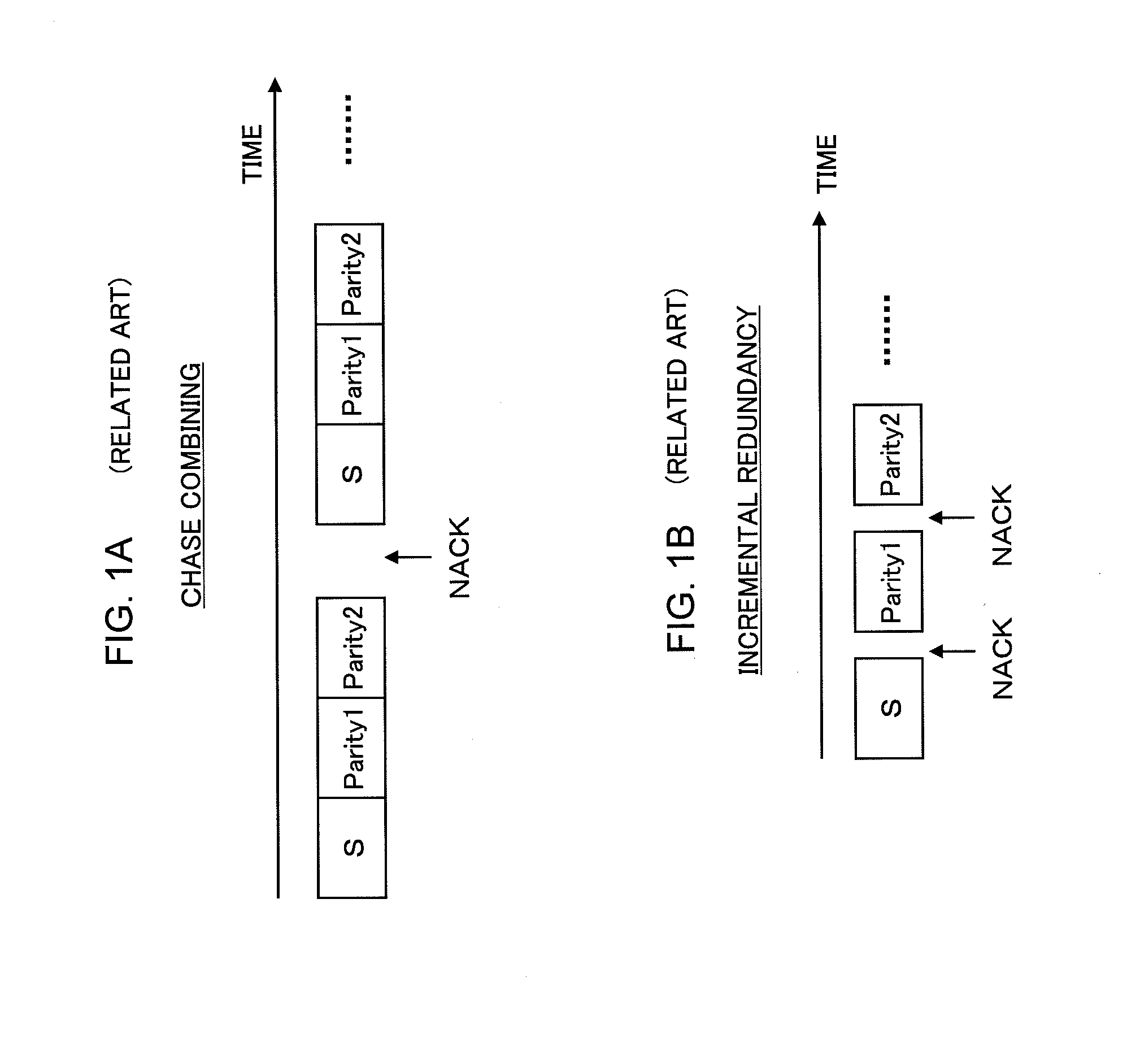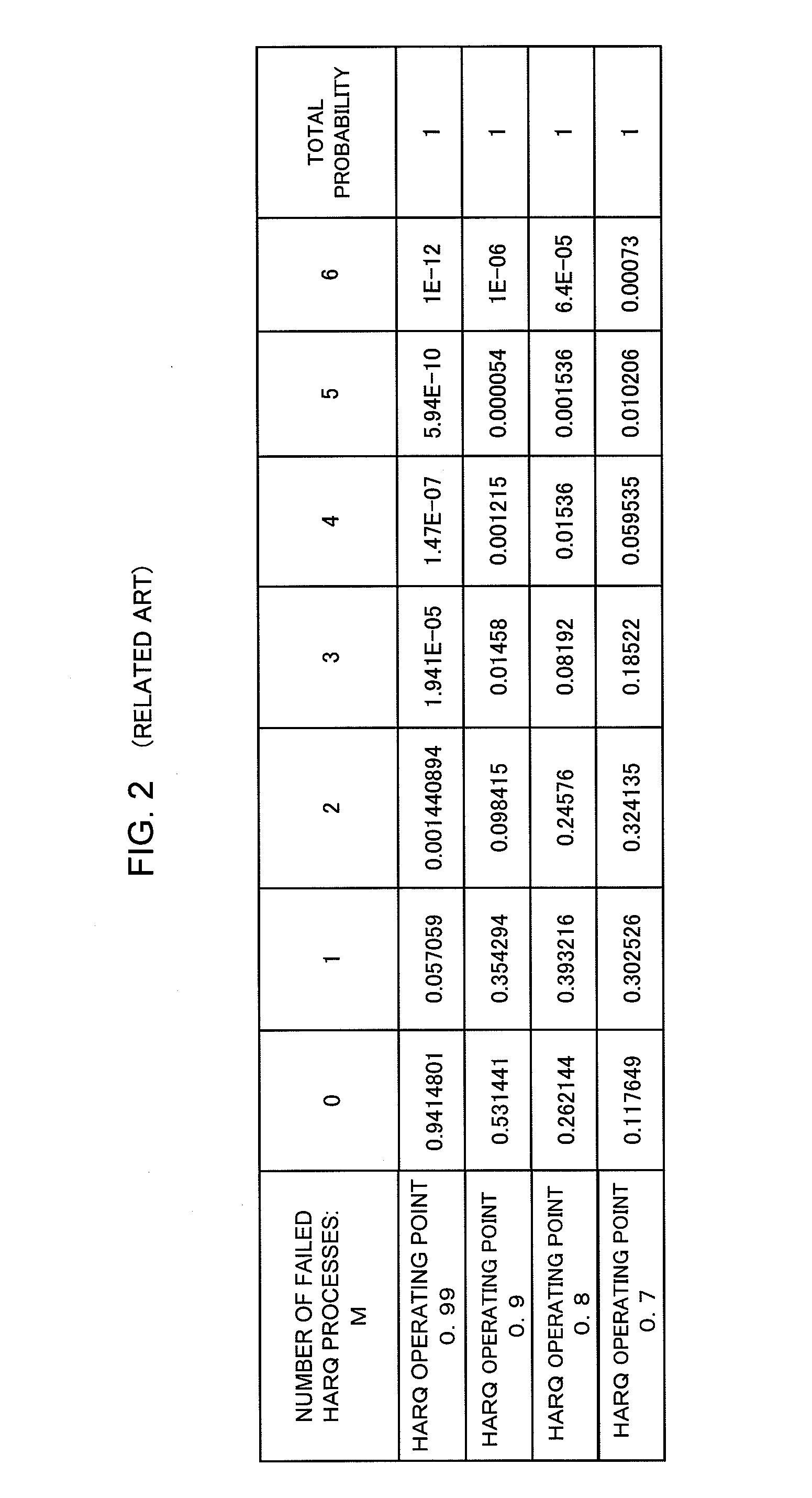Method and device for processing data in retransmission processes
a retransmission process and data technology, applied in the field of communication systems, can solve the problems of reducing efficiency, reducing the efficiency of retransmission, so as to increase the efficiency of memory usag
- Summary
- Abstract
- Description
- Claims
- Application Information
AI Technical Summary
Benefits of technology
Problems solved by technology
Method used
Image
Examples
first exemplary embodiment
1. First Exemplary Embodiment
[0041]FIG. 3A is a block diagram showing a schematic configuration of a retransmission process control circuit in a communication device according to a first exemplary embodiment of the present invention. FIG. 3B is a time chart to describe the operations of a method for processing data in multiple retransmission processes according to the first exemplary embodiment. Here, to avoid complicating the description, it is assumed that a buffer 10 having three (m=3) memory areas B1 to B3 for six (n=6) retransmission processes P1 to P6 is provided, with each memory area storing one received signal that may become the target of retransmission in one retransmission process. Note that the number (n) of retransmission processes and the number (m) of memory areas shown here are examples for description purpose and are not limited to six and three, respectively.
[0042]An error detection section 11 detects an error in a received signal stored in the buffer 10 and outpu...
second exemplary embodiment
3. Second Exemplary Embodiment
[0079]In the control according to the above-described first exemplary embodiment, all received soft symbols in one retransmission process are discarded when selective DISCAERD is performed. However, in some schemes such as IR-HARQ by which additional redundant information is sequentially retransmitted after coded main-body information, decoding cannot be performed only with additional information. Accordingly, on the receiving side, if all the received soft symbols in a retransmission process are discarded, decoding cannot be carried out even if the sending side retransmits additional redundant information in the retransmission process in question. Therefore, it is necessary to keep at least main-body information in a retransmission process that is a target of DISCARD. If the turbo code with the code rate R=⅓ shown in FIG. 1B is taken as an example, the first-transmitted systematic bit sequence S cannot be discarded in order that decoding can be carried...
application example
4. Application Example
[0090]FIG. 10A is a schematic block diagram of a packet data communications system using the radio communication device according to the example of the present invention, and FIG. 10B is a block diagram showing a turbo encoder, which is an example of an encoder. Here, the radio communication device shown in FIG. 5 is used on the receiving side. Therefore, in FIGS. 5 and 10A, those blocks that have similar functions are denoted by the same reference numerals.
[0091]Referring to FIG. 10A, a turbo encoder 301 in the sending-side device, upon receipt of an input of a series of data packets for transmission from an upper layer, performs error correction encoding on each one of these packets, thereby generating coded data packets. The coded data packets are stored in a HARQ transmission buffer 302. Under the control of a HARQ control section 303, these packets are subjected to, for example, QPSK modulation by a transceiver section 304 and then transmitted out through ...
PUM
 Login to View More
Login to View More Abstract
Description
Claims
Application Information
 Login to View More
Login to View More - R&D
- Intellectual Property
- Life Sciences
- Materials
- Tech Scout
- Unparalleled Data Quality
- Higher Quality Content
- 60% Fewer Hallucinations
Browse by: Latest US Patents, China's latest patents, Technical Efficacy Thesaurus, Application Domain, Technology Topic, Popular Technical Reports.
© 2025 PatSnap. All rights reserved.Legal|Privacy policy|Modern Slavery Act Transparency Statement|Sitemap|About US| Contact US: help@patsnap.com



